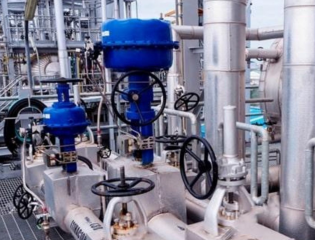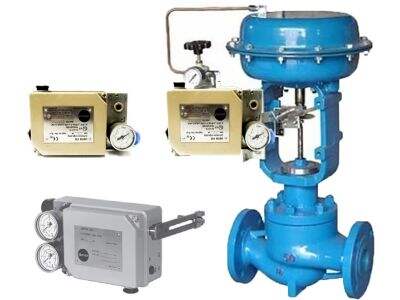Při manipulaci s korozivními materiály je důležité použít vhodné materiály pro regulační ventily. Zařízení může být poškozeno nebo může být procesní účinnost ovlivněna korozí. Společnost Fisher nabízí širokou škálu materiálů pro regulační ventily používané v korozních aplikacích. Zde je návod, jak vybrat správné materiály pro vaše potřeby.
Klíčové faktory, které je třeba zvážit
Faktory, které je třeba zvážit při výběru materiálů pro regulační ventily pro korozní provoz. Jedním z prvních zvažování je, jaký typ koroze provádí proces. Každý materiál odolává korozi z různých korozivních látek, proto je důležitým faktorem korozivní látka, která se používá, při výběru materiálu.
Dalším zvažováním je teplota a tlak procesní tekutiny. Vysoká teplota a tlak: některé materiály nemusí být schopny snést vysoké teploty nebo tlaky, je důležité vybrat materiál na základě podmínek vašeho procesu.
Kromě toho by měla být při volbě materiálu pro regulační ventily zohledněna rychlost průtoku a proudění procesní kapaliny. Některé materiály jsou náchylné k vysokému opotřebení nebo korozi při vysokém průtoku, proto je důležité vybrat materiál, který vydrží provozní podmínky daného procesu.
Výhody a nevýhody pro korozní prostředí
Existuje několik typů materiálů, které jsou běžně používány pro regulační ventily v korozním prostředí, každý má své vlastní výhody a nevýhody. Nerezová ocel je nejpoužívanějším materiálem pro regulační ventily díky vysoké odolnosti proti korozi a dobré pevnosti a houževnatosti. Nerezová ocel je však nákladná a není vhodná pro provoz při vysokých teplotách nebo vysokém tlaku.
Uhlíková ocel je také široce používána jako kontrolní ventil materiál. Uhlíková ocel Uhlíková ocel je levnější než nerezová ocel a je také odolná proti korozi. Uhlíková ocel však může rezavět, pokud není dostatečně opatřena povrchovou úpravou nebo vnitřním potahem. Pokud je koroze důležitým faktorem, může být vhodnější volba nerezová ocel.
Jak posoudit kompatibilitu materiálu s procesními kapalinami
Kompatibilita materiálu s procesní kapalinou Pro určení, zda je materiál kompatibilní s hydraulickým olejem, je třeba vzít v úvahu chemické složení kapaliny a způsob její interakce s materiálem. Stejně tak je třeba zohlednit teplotu, tlak a průtok procesní kapaliny a způsob jejich interakce s materiálem.
Dále je třeba vzít v úvahu přítomnost jakéhokoli nečistoty nebo kontaminantu v procesní kapalině, který může způsobit korozi a/nebo erozi materiálu. Provedení testů a experimentální práce pro porovnání kompatibility materiálu s procesními kapalinami může pomoci zajistit správný výběr materiálu pro konkrétní použití.
Význam dobrých povlaků a výstelky v korozním prostředí
Kde jsou materiály regulačních ventilů vystaveny korozi a erozi, měly by být poskytnuty vhodné povlaky a výstelky. Životnost regulační ventily lze prodloužit a riziko poškození zařízení snížit pomocí povlaků a výstelky.
Některé běžné typy povlaků a výstelky, které se používají v korozním prostředí, jsou epoxidový povlak, pryžová výstelka a keramický povlak. Tyto povlaky a výstelky poskytují dodatečnou ochranu proti korozi a umožňují udržovat materiály regulačních ventilů v takovém stavu, aby odolávaly chemickému útoku.
Návrhy a doporučení pro výběr materiálů regulačních ventilů
Když si musíš vybrat kontrolní ventil materiály pro náročné provozní podmínky je klíčové spolupracovat s dodavateli, jako je Xiangjing, kteří znají procesní potřeby a dokáží vám doporučit nejvhodnější materiály pro vaši aplikaci. Pokud vezmeme v úvahu typy koroze a podmínky teploty a tlaku, stejně jako rychlost proudění a korozní médium, které je dopravováno, je také velmi důležité zvážit, jaké nečistoty budou provázet dopravovaný plyn.



 EN
EN
 AR
AR
 BG
BG
 HR
HR
 CS
CS
 DA
DA
 NL
NL
 FI
FI
 FR
FR
 DE
DE
 EL
EL
 HI
HI
 IT
IT
 JA
JA
 KO
KO
 NO
NO
 PL
PL
 PT
PT
 RO
RO
 RU
RU
 ES
ES
 SV
SV
 CA
CA
 TL
TL
 IW
IW
 ID
ID
 LV
LV
 LT
LT
 SR
SR
 SK
SK
 SL
SL
 UK
UK

